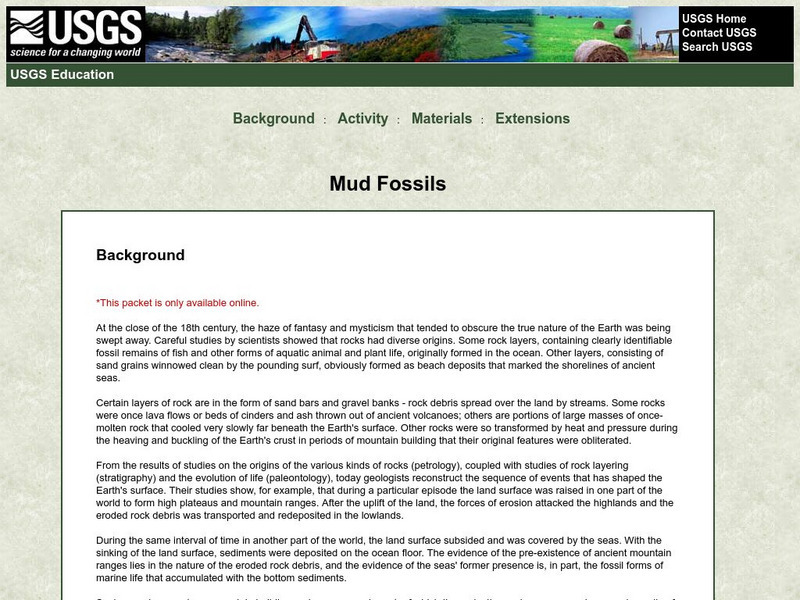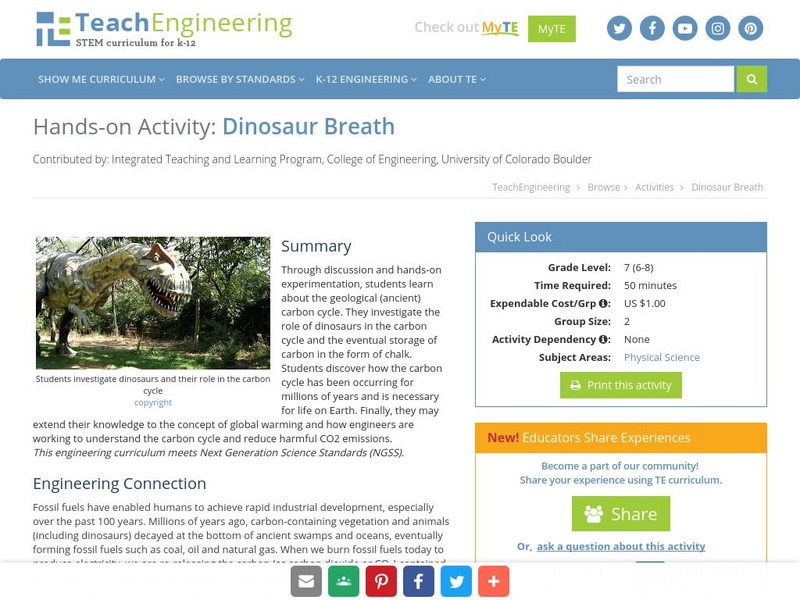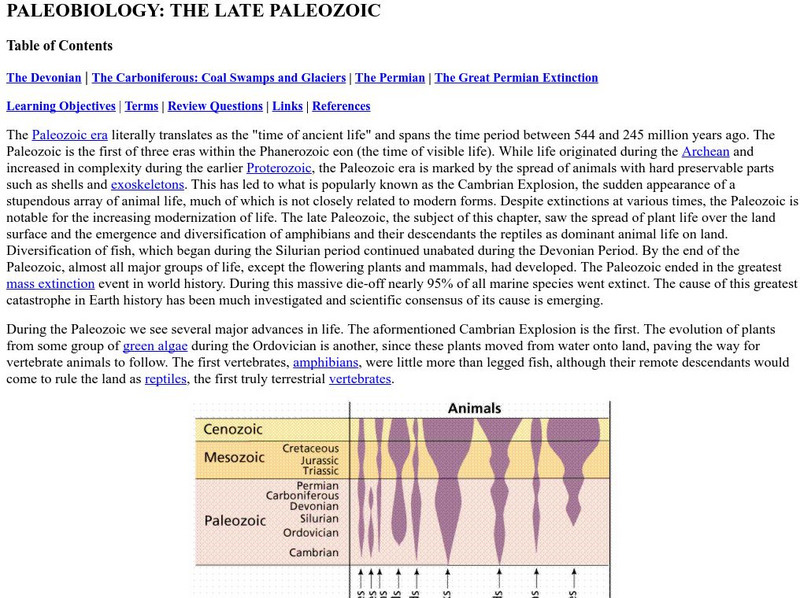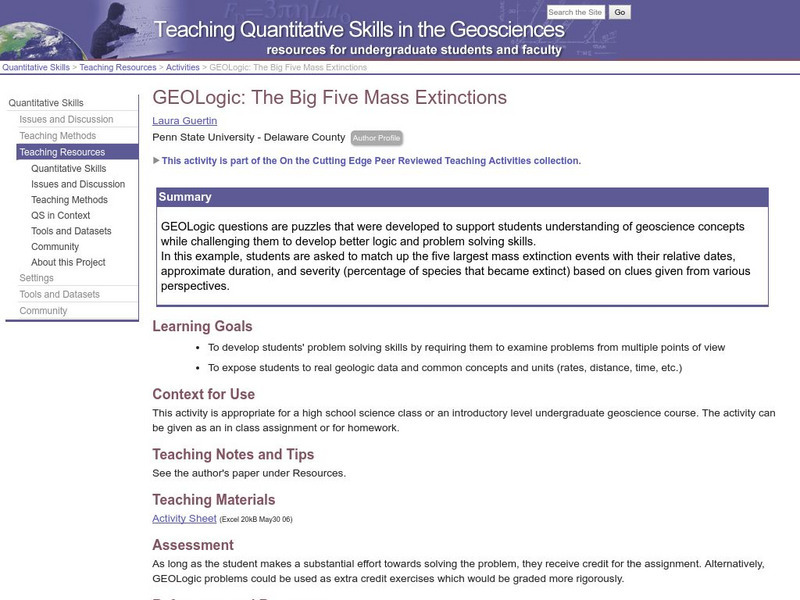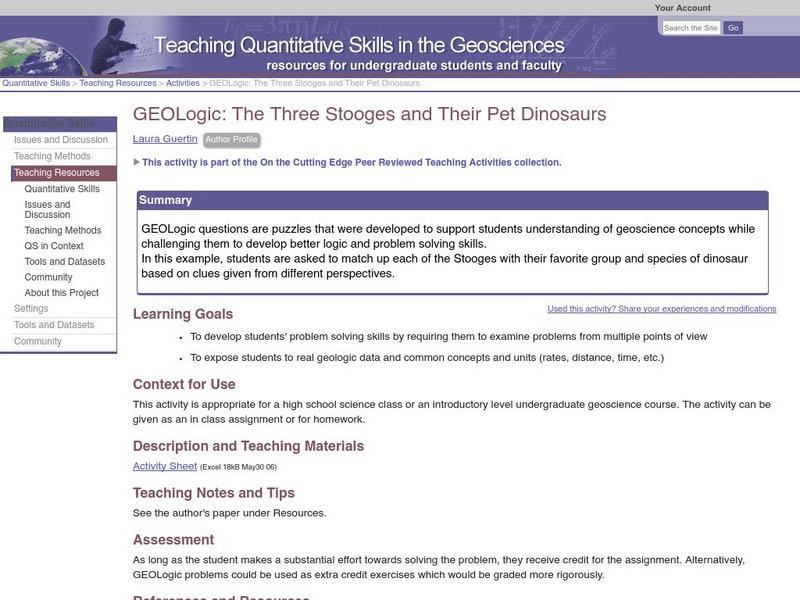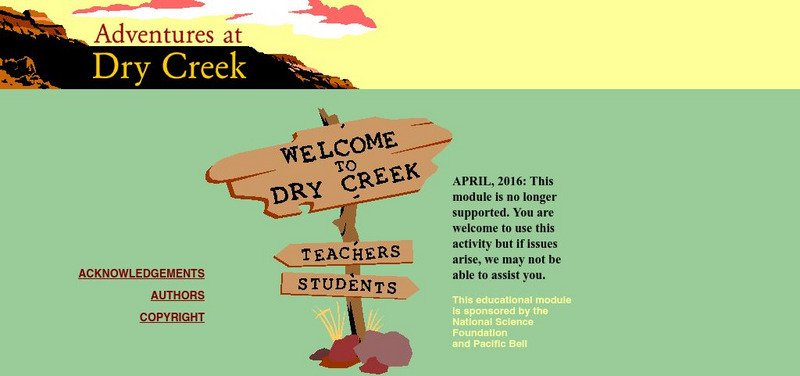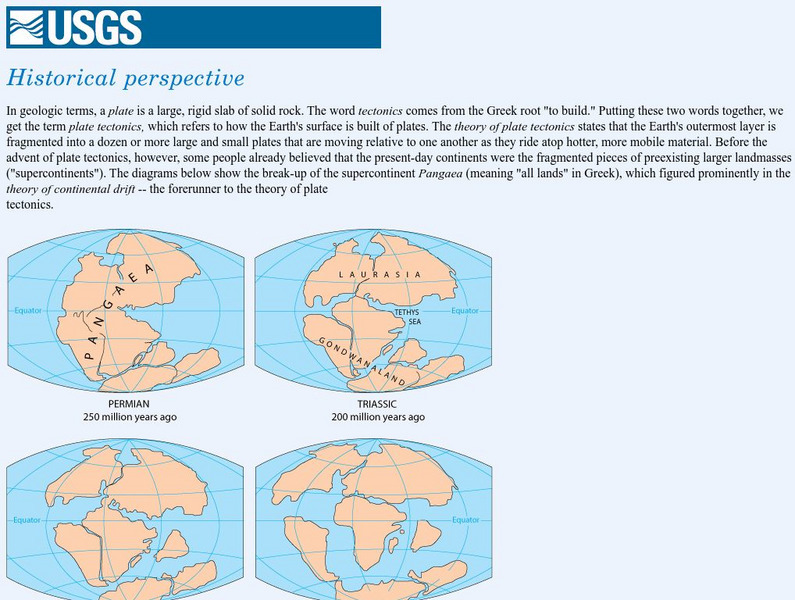Science Education Resource Center at Carleton College
Serc: Identifying Fossils: Exploring the Mississippi River Bluffs
Learners investigate fossils found in the Decorah Shale found in the Mississippi River bluffs. They will determine the name and description of the most common fossils. They will also determine how old the fossils are and what the...
US Geological Survey
U.s. Geological Survey: Mud Fossils
Two part lesson allows for students to observe real fossils then make and recover their own fossils using mud.
TeachEngineering
Teach Engineering: Dinosaur Breath
Through discussion and hands-on experimentation, students learn about the geological (ancient) carbon cycle. They investigate the role of dinosaurs in the carbon cycle and the eventual storage of carbon in the form of chalk. Students...
PBS
Pbs Learning Media: Aging Diamonds?
In this video from Nature, geological detectives use ancient diamonds to learn more about Earth's inner layers. [1:42]
Khan Academy
Khan Academy: The Atmosphere and Life
This is an interview between two scientists discussing how shaping the biosphere is due to geologic events and changes in the atmosphere. Learn how there is a "complex balance between Earth's processes and its network of life".
Khan Academy
Khan Academy: What Is the Biosphere?
This article explains that as our knowledge of life on the planet evolves, we've come to use the word biosphere as a way of explaining the entire intertwined network of life on Earth. This concept combines an understanding of geology,...
University of California
Ucmp: Plate Tectonics
Provides hyperlinks to the history behind and the mechanisms driving plate tectonics. Be sure to click on the globe icons for animations of plate tectonics.
Estrella Mountain Community College
Online Biology Book: Paleobiology: The Late Paleozoic
College-level biology book covers the Late Paleozoic geologic time period in Earth's history. See photographs of fossil evidence from that era in addition to diagrams to help with understanding.
Science Education Resource Center at Carleton College
Serc: Geo Logic: Lagerstatten and Unique Fossils
With GEOLogic questions, students are asked to match several unique fossils with the sites and locations where they were found, as well as their geologic age.
Science Education Resource Center at Carleton College
Serc: Geo Logic: Dinosaur Trackways
Using GEOLogic questions and puzzles, students associate different dinosaur trackways with their locations and the rock formations containing the trackways based on clues given from various points of view.
Science Education Resource Center at Carleton College
Serc: Geo Logic: The Big Five Mass Extinctions
Using GEOLogic puzzles, students are asked to match the five largest mass extinction events with their relative dates, approximate duration, and severity based on clues given from various perspectives.
Science Education Resource Center at Carleton College
Serc: Geo Logic: The Three Stooges and Their Pet Dinosaurs
With GEOLogic puzzles, students are asked to match each of the Three Stooges with their favorite group and species of dinosaur based on clues given from different perspectives.
Curated OER
National Park Service: Fossils in Time Unit
In this lesson, students learn about the earth's past by studying clues that have been left behind, such as fossils and rocks. Students will find the answers to many questions: What is paleontology?, What is geological time?, What can we...
Science Education Resource Center at Carleton College
Serc: Geo Logic: State Fossils
With the use of GEOLogic questions, students are asked to identify states with their respective state fossils, and determine the year in which it was declared, based on clues given from various points of view.
PBS
Nova: Magnetic Storms: When Compasses Pointed South
Earth's magnetic poles have reversed themselves throughout its long history. Find out what scientists know about these reversals. A geologic time line shows when the reversals occurred.
Famous Scientists
Famous Scientists: Charles Lyell
Learn about the works of Charles Lyell, a geologist who studied Earth's history.
US Geological Survey
Lake Baikal: A Touchstone for Global Change
This site is an interesting article about Lake Baikal in Russia. This unique lake is helping scientists to learn more about the patterns of ecological change in the world and about the history of the world.
Alabama Learning Exchange
Alex: Researching Hurricanes With Technology
This lesson will help students to understand the formation, power, and history of hurricanes. Students will do this using a combination of technological skills. Examples of technology used include: PowerPoint, Word, Netscape Composer,...
University of California
Ucmp: Adventures at Dry Creek
For this lesson, students embark on an adventure to find out what life was like in Montana 60-70 million years ago. Students "join" a research lab to collect fossils from Montana and analyze them to find direct and indirect evidence of...
American Geosciences Institute
American Geosciences Institute: What Can We Tell From the Fossil Record?
Find out what the fossil record tells scientists about the geologic and biological history of the Earth.
US Geological Survey
Usgs: Historical Perspective
A graphic map of Lauraisia is provided at this site on continental drift and the history of the Earth. You can also search text to find reference to Laurasia.
Curated OER
National Park Service: Oldest Rocks
Rocks can give us clues into the history of Earth. Learn what the rocks in the National Parks can tell us.
CK-12 Foundation
Ck 12: Plate Tectonics and Seas of the Paleozoic and Mesozoic Era Study Guide
[Free Registration/Login may be required to access all resource tools.] Provides a brief overview of plate tectonic activity during the Paleozoic and Mesozoic eras and the changes in sea level that occurred. Includes some questions to...
PBS
Pbs: A Science Odyssey
Website for the PBS series "A Science Odyssey." Numerous opportunities to explore the people and discoveries of science.

